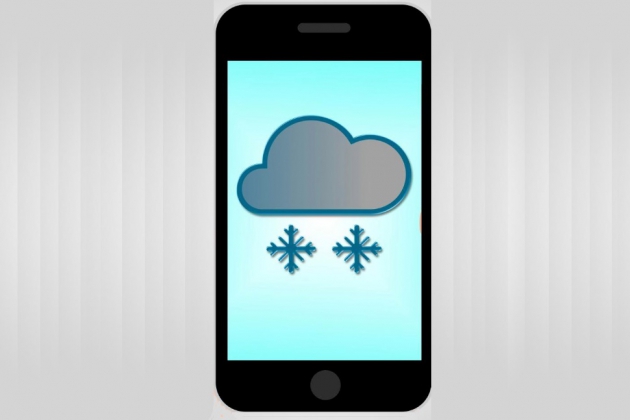Most of us appreciate that first day of the year when you need air conditioning, so it can be disconcerting if your system is set for cooling, yet produces warm air. Whether you’ve noticed a spike in your energy bills or you allow the air conditioning to run for an extended period, yet it fails to cool your home, this can be a serious issue that needs attention. So, here we’ll explore the topic in a little more detail, so you can determine if you need professional help.
Why is Your Heater Activating?
If you’re experiencing either of the scenarios above, you’re likely to have a malfunctioning HVAC system. There are a number of reasons why your heating may activate, but the most likely cause is that there is an electrical issue within your central unit that is turning the heat on when it shouldn’t activate. Shorted wiring, an electrical thermostat problem or faulty electronics within your furnace could all explain this type of issue. All of these issues can have serious consequences, so if you suspect that your heater is improperly turning on, you will need to contact a professional HVAC specialist. Working with live electrical components and wires can be highly dangerous, but these issues can typically be resolved with a quick, professional repair.
Diagnosing Thermostat Issues
One of the most common issues for this problem is a fault with your thermostat. Fortunately, this can involve one of the quickest fixes. The first thing you need to do is check to see if your thermostat has been set to “cool.” While this may seem simple, it is surprisingly easy to accidentally change thermostat settings.
If your thermostat is set to cool, there are a number of issues that could trigger your heating when you want to cool your home. These include:
- A faulty thermostat: Most solutions for a faulty thermostat will require the expertise of a professional HVAC technician, but you may be able to diagnose an issue yourself. The first thing you will need to check is if the thermostat has lost power. Many homeowners forget that their thermostat is battery powered, and when the batteries start to run low, it can cause performance problems. So, even if the display is illuminated, it may be worth checking to see if the batteries need to be changed. If you’re unsure how to access the battery chamber, you’ll need to consult your owner’s manual. In most cases, the thermostat panel will slide or lift to reveal the batteries. Try installing a new set of batteries to see if this resolves the issue.
If the display is completely blank, you should also check if a breaker has been tripped. Check your breakers and see if they need to be reset. In a worst case scenario, your thermostat itself may be defective, which will require a replacement to be fitted. While this may seem like a massive inconvenience, it does provide an opportunity to upgrade to a smart thermostat that offers greater functionality and efficiency.
- Faulty Thermostat Connection: There is a great deal of wiring that connects your thermostat to your furnace, air conditioner and other parts of your HVAC system. So, it can be very easy for wiring to become damaged, shorted or disconnected. This could mean that while you have set your thermostat to “cool,” this message is not being relayed to the furnace or air conditioner unit. This could trigger the heating to switch on, producing cool air. Shorts can also be caused by water damage or even rodents chewing on the wires, so you will need an HVAC expert to help restore the connections.
Furnace Electrical Problems
Your heater and air conditioner work together in close cooperation. In fact, even in the summer, the blower inside your furnace is required to circulate the cooled air throughout your home.
Inside your furnace is a complex network of circuit boards and wires. Over time, or because of a specific issue such as water damage, these connections and boards can develop a malfunction and short out. This is one of the most common causes of heater issues.
In simple terms, the motherboard inside your furnace tells it what it needs to do. So, when it is not working properly, the signal for cooling received from the thermostat and AC unit cannot be understood properly, which may trigger the heating.
While this may appear to be a simple issue, it is important to recognize the risks associated with electrical work. You should avoid performing any electrical repairs on your furnace, as you may put yourself at risk of injury or place your home in danger of fire or damage. So, if you suspect your furnace has a wiring issue, be sure to call in an experienced HVAC professional.
Correcting the Issue
While there is nothing as frustrating as something in your home malfunctioning, especially your HVAC system, but fortunately, most problems are generally simple to correct with low cost, relatively quick solutions.
In this type of scenario, where your heating is turning on when you’re trying to cool your home, the most straightforward fix may be to change your thermostat batteries or resetting your tripped breaker. Fortunately, even a more complex issue such as replacing a circuit board or restoring wiring can be quickly and easily finished by an experienced professional.
A heating and cooling specialist will be able to assess your system to determine the underlying cause of the issue to provide a rapid solution to restore proper functionality and your home comfort.
If you are experiencing this or any other HVAC issue, be sure to contact a heating and cooling specialist. An experienced technician will be able to quickly diagnose the underlying issue and provide an effective solution to ensure that your air conditioning is restored as soon as possible. This will not only help to improve your home comfort, but also reduce your energy bills throughout the summer.

